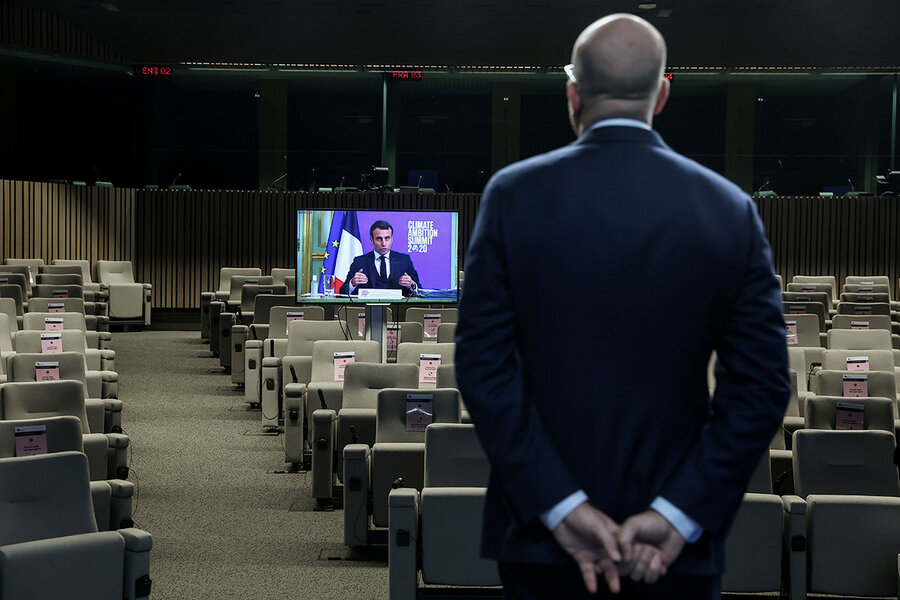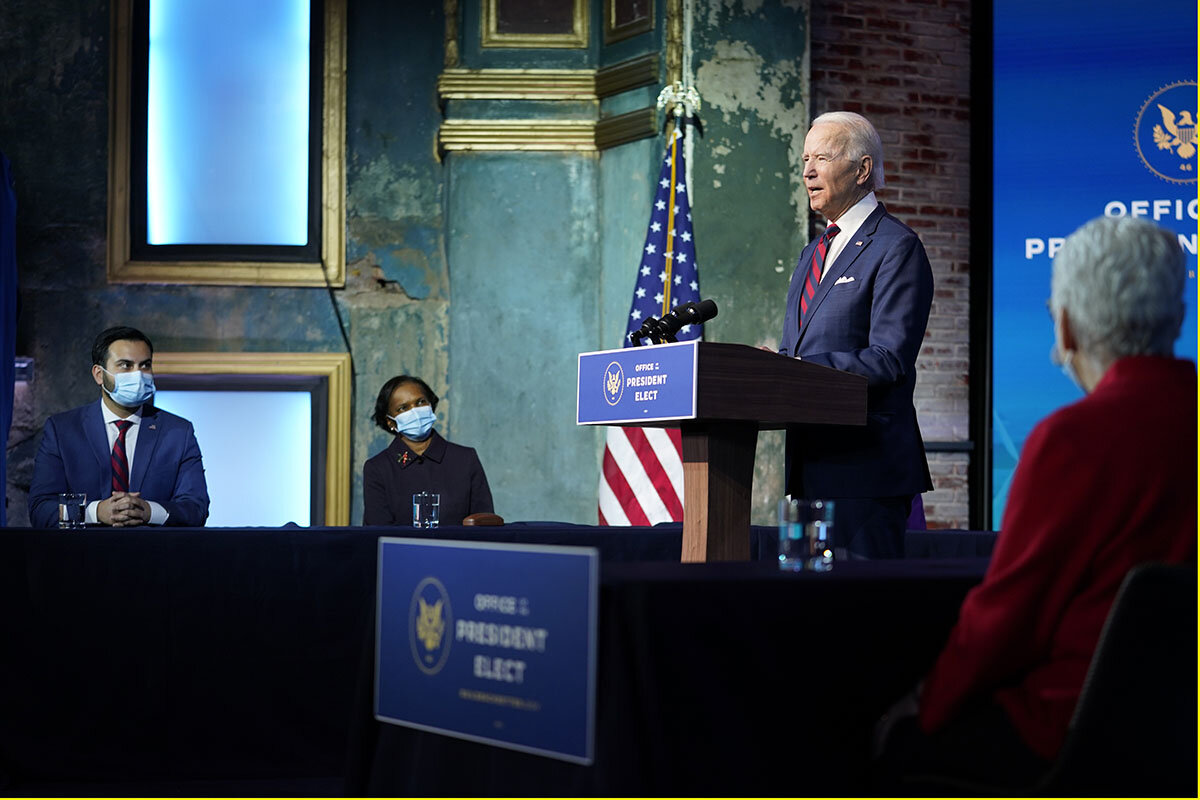The next climate change challenge: Matching words with action
Loading...
| London
We’re just days into January, but the signs are already clear: 2021 is shaping up as a make-or-break year in the fight to curb climate change.
Very few world leaders now doubt the scale of the problem. They have vivid memories of last year’s record heat waves, ice melts, wildfires, and hurricanes, and now they have new scientific reports that global warming is still gathering pace.
The world’s key economic powers – the European Union, China, and the United States under the new Biden administration – have all announced more ambitious goals to limit reliance on the fossil fuels that do the most climate damage. British Prime Minister Boris Johnson has also made new clean energy pledges, with an eye toward a major international climate conference he will host in November.
Why We Wrote This
Almost all world leaders now say they are taking the threat of climate change seriously, and some are pledging more money to the fight. But at this year’s climate summit, will their actions match their words?
The make-or-break question is this: Will world leaders exhibit the political will to translate their words into action?
Two litmus tests bear watching, with the likelihood we’ll have a far clearer answer in the coming months.
One is political – whether, in the run-up to November’s conference, national governments will approach climate action not merely as a matter of importance but as a genuine emergency.
The second is economic. It’s about “following the money.” In this case, the historically huge sums that governments around the globe are poised to spend on rebuilding their pandemic-damaged economies. A number of leading governments have pledged to “build back better,” emphasizing low-carbon projects, but how green will their priorities actually be?
Both of these are distinctly 2021 challenges.
The November conference, in the Scottish city of Glasgow, will come six years after the last major international step toward fighting global warming: the Paris climate agreement. The recently heightened focus on Glasgow has a lot to do with what’s happened since.
In Paris, every nation – including the world’s two worst carbon emitters, China and the United States – pledged to take measures to reduce their greenhouse gas emissions, with the goal of keeping global temperatures at most 2 degrees Celsius (3.6 degrees Fahrenheit) higher than pre-Industrial Revolution levels, and preferably only 1.5 degrees C higher.
The deal was seen as a turning point at the time, even though many scientists worried that the pledges were not ambitious enough to avert catastrophe by the end of this century. But over the past five years, not only have the signatories’ national commitments proved insufficient to put a brake on global warming, but the U.S. announced it was pulling out of the treaty.
According to data published in recent days, 2020 and 2016 were the hottest years since the first reliable records over a century ago. Most record-hot years have now been registered this century, and the new data also confirmed another milestone: The global temperature increase since the 1800s now stands at 1.2 C, not far below the limit aspired to in Paris.
Last month, the United Nations projected that figure would reach 3.2 degrees C by the end of the century unless countries did far more to address climate change.
And it’s not just the numbers. The last 12 months have seen unprecedented wildfires raging through the western U.S., Australia, and northern Siberia; extremes of drought and record downpours have hit Africa and Asia, and more hurricanes and tropical storms than ever before battered the Americas. They have done billions of dollars of economic damage and taken countless lives.
Prime Minister Johnson has a huge political incentive to make Glasgow a success. Having led Britain out of the EU, he sees his role as chair of the climate conference as a chance to display his country’s undiminished influence on the world stage.
He will have been encouraged by Mr. Biden’s decision to reverse President Donald Trump’s withdrawal from the Paris accord as one of his first acts in office. Indeed, the British leader reacted with a tweet calling it “hugely positive news,” adding that he looked forward “to working with our U.S. partners to do all we can to safeguard our planet.”
But the question is how far the U.S. and other governments will go in Glasgow. Most climate scientists say they must set 1.5 degrees C as a firm target for temperature rises and give their steps toward that goal the force of binding legal commitments rather than the voluntary pledges agreed in Paris.
The second litmus test – the economic one – will also be telling.
Here, there have been encouraging early signs. The EU last year agreed to earmark nearly one-third of a roughly $900 billion pandemic-recovery fund for low-carbon projects. According to an analysis late last year by Britain’s Guardian newspaper, France, Germany, and Spain, as well as Britain, have unveiled recovery plans that will indeed yield a net reduction in carbon emissions.
The big potential game changer, however, is the U.S. During the presidential election campaign, Joe Biden laid out a historically large plan, worth nearly $2 trillion, for low-carbon energy infrastructure and other green initiatives over four years, though the final shape and size of the package may depend on the new president’s ability to win bipartisan support in Congress.
But not everyone is being so ambitious. Canada has earmarked only 2% of its COVID-19 recovery package for low-carbon projects, South Korea is investing heavily on carbon-intensive industries to pull itself out of the economic slump, and the Indian government has been reluctant to end subsidies for coal producers.
China, responsible for 80% of the growth in world carbon emissions over the past 20 years, will be key not just to the success of the Glasgow summit but to the overall battle against climate change. Its economy has pretty much recovered from the pandemic, and last year leader Xi Jinping unveiled a dramatic pledge to make China carbon-neutral by 2060. As yet, however, China has devoted just a tiny sliver of pandemic-recovery investments to low-carbon initiatives.
The real measure of its commitment should be apparent in the final shape of its new five-year plan, prioritizing investment plans across the economy, which comes into force in March.
In Beijing – as in Washington, Ottawa, Brussels, and Glasgow, where the world will gather this fall – it will be a case of not just what leaders say about climate change, but what they do.







